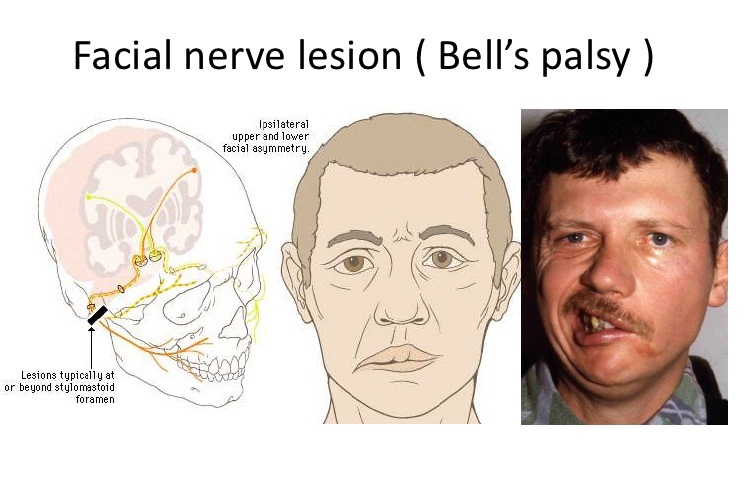Bell’s Palsy Causes, Symptoms, Diagnosis And Treatment

What Is Bell’s Palsy?
Bell’s Palsy is a form of Facial Paralysis resulting from a dysfunction of the cranial nerve VII (the facial nerve) causing an inability to control facial muscles on the affected side.
Damage to the facial nerve that controls muscles on one side of the face causes that side of the face to droop. The nerve damage may also affect one’s sense of taste and how one makes tears and saliva.
This condition comes on suddenly, often overnight, and usually gets better on its own within a few weeks.
Typically, the condition gets better on its own with most achieving normal or near-normal function. Many show signs of improvement as early as 10 days after the onset, even without treatment.
Causes Of Bell’s Palsy:
The exact cause of Bell’s Palsy is yet unknown.
However, it is often linked to exposure to a viral infection.
Viruses that have been linked to Bell’s Palsy include the virus that causes:
- Cold sores and genital herpes (herpes simplex)
- Chickenpox and shingles (herpes zoster)
- Mononucleosis (Epstein-Barr)
- Cytomegalovirus infections
- Respiratory illnesses (adenovirus)
- German measles (rubella)
- Mumps (mumps virus)
- Flu (influenza B)
- Hand-foot-and-mouth disease (coxsackievirus)
Bell’s Palsy occurs more often in people who:
- Are pregnant, especially during the third trimester, or who are in the first week after giving birth
- Have an upper respiratory infection, such as the flu or a cold
- Have diabetes
Symptoms Of Bell’s Palsy
The following symptoms are exhibited by those suffering from Bell’s Palsy:
- Rapid onset of mild weakness to total paralysis on one side of the face — occurring within hours to days
- Facial droop and difficulty making facial expressions, such as closing an eye or smiling
- Drooling
- Pain around the jaw or in or behind the ear on the affected side
- Increased sensitivity to sound on the affected side
- Headache
- A decrease in the ability to taste
- Changes in the amount of tears and saliva one produces
Diagnosis Of Bell’s Palsy:
The following tests help eliminate other causes of the symptoms exhibited, thereby diagnosing Bell’s Palsy.
- Electromyography (EMG).
This test can confirm the presence of nerve damage and determine its severity.
- Imaging scans.
- Magnetic resonance imaging (MRI) or computerized tomography (CT) may be needed on occasion to rule out other possible sources of pressure on the facial nerve, such as a tumor or skull fracture.
Treatment Of Bell’s Palsy:
The following treatment options are available:
- Medications
- Corticosteroids, such as prednisone
- Antiviral drugs
- Physical therapy
- Surgery
- Decompression surgery (not recommended due to side effects)
By : Natural Health News




